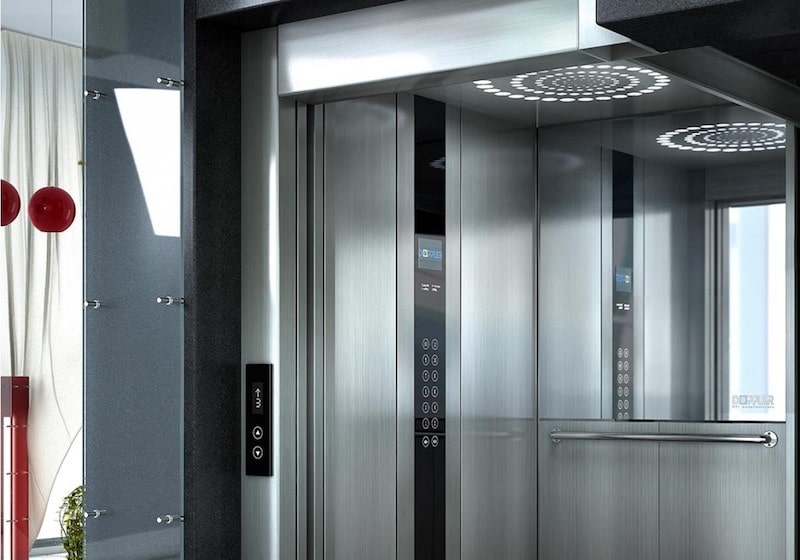Leading Lift Companies in London: Offering High Quality Installations and Maintenance
Wiki Article
Looking Into the Globe of Lifts: Usual Issues Dealt With by Different Lift Devices
As we browse with the upright transportation systems of modern structures, lifts attract attention as an indispensable element of our lives. Nonetheless, behind their smooth operation lies a world of detailed mechanisms that can often run into obstacles. From hydraulic elevators to traction systems and machine-room-less layouts, each lift type includes its set of typical problems. Recognizing these challenges is crucial for ensuring the smooth functioning of these essential systems. Let's discover the complexities that underlie the operation of lifts and the potential problems that can emerge, clarifying the elaborate internet of lift mechanisms.Hydraulic Lifts
Hydraulic lifts, frequently favored for low-rise structures, utilize fluid pressure to regulate the movement of the elevator vehicle (lift repair companies). This mechanism includes a hydraulic pump pushing oil right into a cyndrical tube, triggering the lift to relocate the preferred direction. While hydraulic lifts are understood for their smooth and silent operation, they do include their own set of usual problemsOne prevalent issue with hydraulic elevators is oil leakage. The seals in the hydraulic system can wear out over time, causing oil seepage. If left unaddressed, this not only develops a mess but can likewise impact the lift's efficiency. Furthermore, problems with the control system, such as damaged shutoffs or a malfunctioning pump, can trigger disruptions in the lift's activity.
Regular maintenance and timely repair work are necessary to make certain the smooth functioning of hydraulic lifts. By dealing with these common issues proactively, structure proprietors can decrease downtime and guarantee the safety and security and performance of their vertical transportation system.
Grip Elevators
When considering vertical transport systems in structures, one more typical type besides hydraulic elevators is the traction lift. Grip lifts operate using a system of ropes and counterweights that relocate the elevator automobile by grasping onto the hoist ropes. This device permits for smoother and much faster vertical transportation compared to hydraulic systems.Among the usual concerns faced by grip lifts is rope wear. The constant motion of the ropes within the traction system can cause damage gradually, possibly triggering the lift to breakdown or end up being hazardous for use. Normal inspections and maintenance of the ropes are essential to make sure the elevator's proper functioning and security.
An additional concern that traction elevators may experience is connected to the control system. Troubles with the control system can result in issues such as unpredictable motion, delays in feedback times, or perhaps total closures. Normal screening and upkeep of the control system are vital to avoid such concerns and make sure the elevator's dependability.
Machine-Room-Less (MRL) Elevators

Among the crucial parts of MRL elevators is the compact gearless grip equipment that is set up within the hoistway. This equipment efficiently drives the lift auto without the demand for bulky equipment located in traditional traction lifts. Additionally, MRL elevators commonly make use of a counterweight system to balance the car, further improving their power effectiveness.
Despite their benefits, MRL lifts may deal with challenges associated with repair and maintenance due to the restricted room for devices installation. Accessibility for servicing elements within the shaft can be restricted, needing specialized training for service technicians. Proper maintenance schedules and routine inspections are important to guarantee the ongoing smooth operation of MRL lifts.
Overloading and Weight Restriction Issues
Straining and weight limitation issues are crucial worries in elevator procedures. Lift manufacturers style lifts with details weight abilities to ensure traveler safety and security and tools durability.When lift repair near me lifts are disabled platform lifts prices uk strained, it places too much pressure on the motor, wires, and other components, possibly triggering failures or breakdowns. If they find excess weight, security mechanisms such as sensors and overload sensing units are in area to avoid lifts from relocating. Furthermore, surpassing weight limits can result in enhanced power consumption and damage on the lift system.
To reduce overloading issues, developing managers ought to prominently present weight restrictions in lifts and educate occupants on the relevance of sticking to these restrictions - lift repair companies. Normal upkeep checks by certified service technicians can likewise help make sure that lifts are running within safe weight specifications. By attending to overloading and weight restriction concerns proactively, building owners can boost elevator safety and effectiveness
Electric System Failures
Exceeding weight restrictions in lifts can not just bring about mechanical problems yet likewise potentially add to electrical system failures within the lift infrastructure. Electrical system failures are an essential issue in lift operation, as they can create unexpected shutdowns, breakdowns, or perhaps security hazards. One typical electric problem is the getting too hot of elements due to too much present flow brought on by overwhelming the elevator past its capability. This can lead to harm to the motor, wiring, or control systems, resulting in expensive repair services and downtime.Routine maintenance and assessments are crucial to identify and address possible electrical problems promptly, guaranteeing the safe and effective operation of elevator systems. By adhering to weight restrictions and conducting routine electric system checks, building owners can alleviate the risk of electric failures in lifts.
Final Thought
disabled platform lifts prices uk
Hydraulic elevators, usually preferred for low-rise structures, make use of fluid stress to regulate the movement of the elevator car.When thinking about vertical transportation systems in structures, one more usual kind apart from hydraulic lifts is the traction lift. Grip elevators run making use of a system of ropes and weights that move the lift cars and truck by clutching onto the hoist ropes. Unlike standard elevators that require a different equipment room to house the tools, MRL lifts integrate most of the components within the shaft, getting rid of the demand for a dedicated equipment area.In final thought, lifts deal with typical issues such as hydraulic breakdowns, traction system failings, and electric system problems.
Report this wiki page